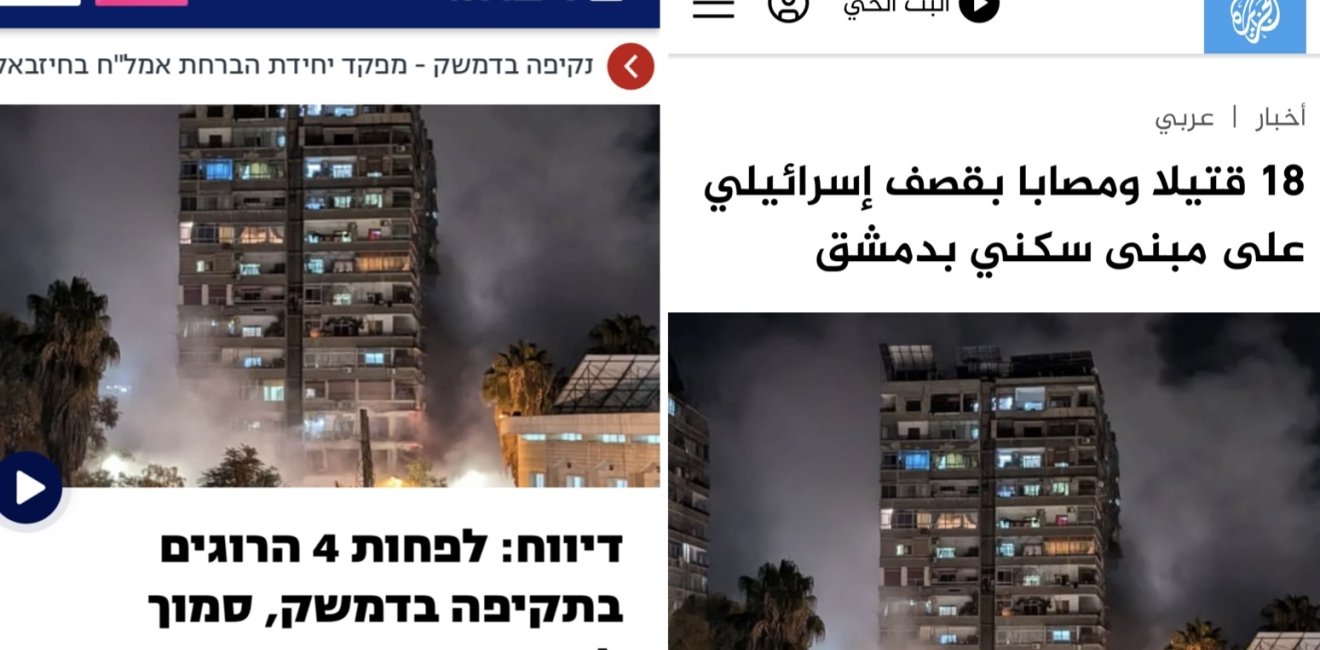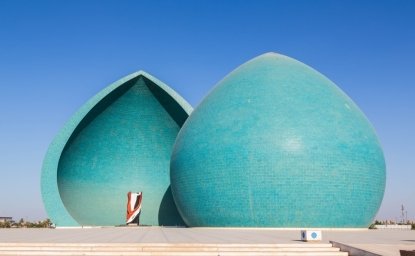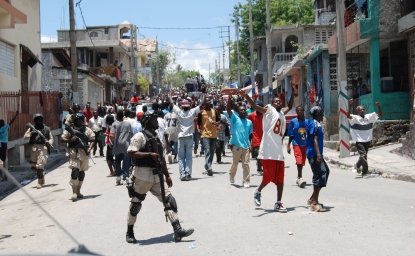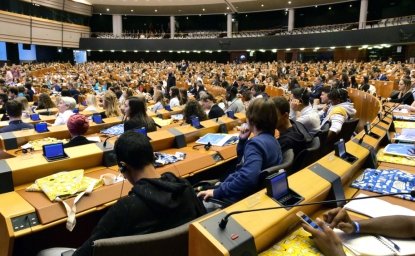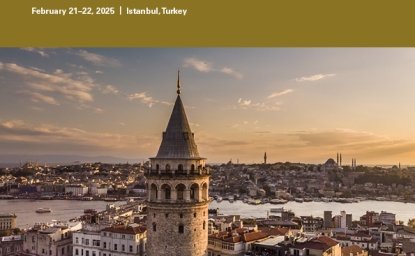Yesterday marked a year since Hamas’ brutal and horrific attack on Israel that killed 1,200 Israelis and other foreign nationals. Young Israelis were murdered at the Nova music festival and the kibbutzim in the south, many of them known for their peace activism in the 76-year-old Palestinian-Israeli conflict. Today, more than 100 Israeli and some American hostages are still held in captivity by Hamas in Gaza.
For those hostages who returned to their loved ones or were saved by the Israeli military, October 7 represents a somber anniversary. Over 80,000 Israelis have been displaced in the north because of the ongoing war between Israel and Hezbollah, and for Israeli society and people of the Jewish faith across the world, this is a year of deep pain and trauma.
Young Israelis were murdered at the Nova music festival and the kibbutzim in the south, many of them known for their peace activism in the 76-year-old Palestinian-Israeli conflict.
Destruction of lives and livelihoods
Today also marks one year of Israel’s brutal war in Gaza that has killed more than 40,000 Palestinians, with conservative estimates showing 11,000 children and 6,000 women amongst them. According to a recent Oxfam report, Israel’s war in Gaza has killed more women and children than “in any other recent conflict in a single year.”
As the joint UN-World Bank’s report assessed, damage to physical infrastructure in Gaza is estimated at $18.5 billion as of the end of January 2024. The World Bank’s September economic update on the Occupied Palestinian Territories notes that the “situation on the ground in Gaza has developed into a full-fledged humanitarian catastrophe, with continued hostilities and sieges preventing entry of essential supplies, including water, food, fuel, non-food items, essential medical supplies and medicines.”
Nine in ten Palestinians have been displaced at least once in the strip, now living in overcrowded shelters with poor sanitation, thereby “increasing women and girls’ risks to violence, infection and disease.” In the West Bank, in addition to more than 700 Palestinians killed in Israeli strikes over the past year that the IDF says are targeting Hamas operatives, extremist settler violence has surged to new levels, claiming more than 21 Palestinian lives. For Palestinians in Gaza who lost their entire families in some cases, their parents, their neighbors, and friends, as well as for Palestinians in the West Bank and those scattered in the diaspora, including here in the United States, it is a year of intolerable loss, pain, and trauma.
Today, the people of Lebanon, who are also living in fear and uncertainty as Israeli bombardment intensifies day after day targeting Hezbollah operatives and their military infrastructure, are also mourning their loved ones killed by “hellish” Israeli strikes, especially during the past three weeks. Many of them are living yet another war they did not want or choose as their country grapples with economic distress, political deadlock, and a deepening humanitarian crisis with more than a million displaced. Many feel Hezbollah forced this war on them when it decided to join Hamas’ attack on Israel on October 8.
Diverging media narratives
These are all mere figures that do not even come close to capturing the staggering human cost of these wars over the past year. Behind every number or data point is a human story that seldom finds a platform or a voice, and if it does, each human agony is shared separately in the various polarities this horrific conflict has solidified.
These are all mere figures that do not even come close to capturing the staggering human cost of these wars over the past year.
The Israeli trauma, that for many Jewish generations screams of the horrors of the Holocaust, is not told or reported in the Arab media. According to a survey conducted by the Palestinian Center for Policy and Survey Research, the “overwhelming majority” of respondents in the West Bank and Gaza say that “they have not seen videos from international or social media showing atrocities committed by Hamas members against Israeli civilians that day, such as the killing of women and children in their homes,” adding that “90% believe that Hamas fighters did not commit the atrocities contained in these videos.”
While this observation is confined to the Palestinians in Gaza and the West Bank, it is similar across the region. What most people across the Arab world have seen over the past year is death, destruction, and suffering in Gaza unfolding before their eyes in real-time. It is shocking to many of them, but tragically not too shocking for those who have followed the news in the region across the span of the Palestinian-Israeli conflict.
For many Arabs, their encounter with Israel, or their idea of it, is seen through the lens of occupation of Palestinian territory and the oppression of Palestinians who are their fellow Arabs. It is why, for many in the region, this conflict did not begin on October 7, 2023. Further, the Iran angle through which this war is framed in Israel and many Western capitals, while not entirely ignored in reporting about Gaza, is still part of the story. This is what reinforces the dehumanization of Israeli civilians in the Arab psyche.
The heart-wrenching stories of Palestinian suffering in Gaza are also not covered “enough” in Israeli media, as Israeli journalist Ilana Dayan told CNN this past week. Dayan described how difficult it is to cover this war, noting, “every time I cover the tragedy in Gaza, I carry October 7 with me, the atrocities I saw,” committed by Hamas.
An NPR report earlier in the year quoted Israelis saying that whatever suffering is being reported in Gaza is “fake news.” Another Israeli, a barber, was recorded saying, “we do not want to see anyone in Gaza, we need to erase them all.” Israeli TV channels almost entirely focus on the Israeli military, the profile of the soldiers, and the military successes against Hamas and its infrastructure.
As some Israeli journalists noted, Israelis are getting news in a “bubble,” which widens the gap between what the world is seeing (mostly Israel as the antagonist due to the civilian suffering in Gaza) and what Israelis are seeing, a war “framed mostly as an existential threat for its survival.” It is why many Israelis are offended or irked by South Africa’s genocide case at the International Court of Justice, as Professor and ICJ expert Eric Schwartz noted in a Wilson Center interview.
Many Israelis also point fingers at Arab media for the language used to refer to Hamas, which Al Jazeera Arabic, for example, describes as a “resistance movement” rather than the terrorist organization they know it to be. Everything is seen through the October 7 lens. This is how the dehumanization of Palestinian civilians is solidified in the Israeli psyche.
Lost humanity
These separate media realities will only fuel more anger, more hatred of the other, and deeper dehumanization. A State Department official noted on a panel that I moderated last year in commemoration of the second anniversary of the Abraham Accords that the starting point for people-to-people connections between Israelis and Arabs is simply “not to dehumanize”—the bare minimum, which seems out of reach today.
Over this past year of horror and war, most people across the Arab world have witnessed how the United States reinforces day after day its “ironclad” support for Israel and its right to defend itself against Hamas and Hezbollah, with cursory or belated mentions of the suffering of the Palestinians. The United States lost credibility the day President Biden himself noted that the number of those Palestinians killed was “exaggerated.”
On the diplomatic front, the US is simply seen as unable to end the suffering of the Palestinians, complicit in everything the Israelis do across the board, and at best, ineffective in achieving a ceasefire that ends the war. Meanwhile, many see how the US and American media outlets have covered the war in Ukraine and Russia’s brutal war there differently, pointing to “glaring double standards” that Queen Rania of Jordan highlighted in her first media appearances following Hamas’ attacks of October 7.
There was much confusion and disbelief when the Biden administration, following the killing of Hezbollah leader Hassan Nasrallah, did not make a single mention of the people of Lebanon, for example. As Lebanese writer Lina Mounzer writes, “ask any Arab what the most painful realization of the last year has been, and it is this: that we have discovered the extent of our dehumanization to such a degree that it’s impossible to function in the world in the same way.”
The strongest commonality today is that both societies are profoundly traumatized. Their collective traumas are felt differently and similarly at the same time.
As this war deepens and expands further, now more directly between Iran and Israel, the pain and suffering of Israelis, Palestinians, and Lebanese who have lost family, friends, neighbors or their homes, churches, mosques, or kibbutzim will haunt generations to come. Yes, the region is complex, and yes, this conflict is deeply rooted in one-sided narrative on both sides. However, the tragic reality is that the nuances and complexities are lost amidst this polarization and dehumanization. The strongest commonality today is that both societies are profoundly traumatized. Their collective traumas are felt differently and similarly at the same time. The challenge moving forward is that if left unaddressed, after this year of war ends, there will be more wars and more trauma.
The views expressed in these articles are those of the author and do not reflect an official position of the Wilson Center.



